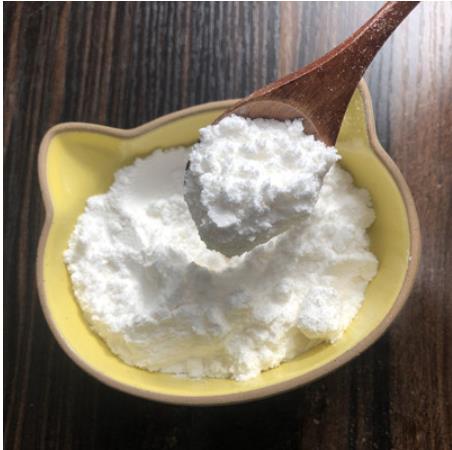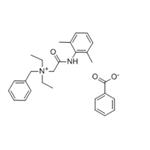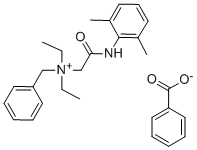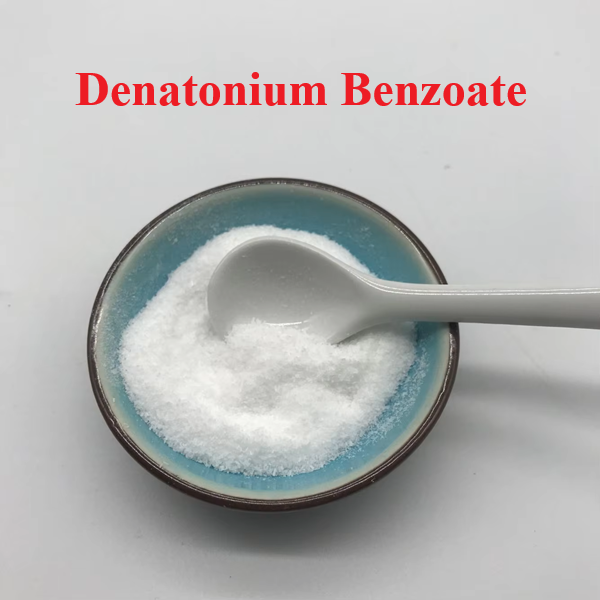Denatonium Benzoate: The Bitterest Compound Known to Science
Denatonium benzoate, also known by its trade name Bittrex, holds the title of the bitterest compound known to science. Discovered in 1958 by Macfarlan Smith, this quaternary ammonium compound has become an essential additive across various industries due to its unparalleled bitterness. This article delves into the chemical properties, composition, applications, and storage methods of denatonium benzoate, providing a comprehensive overview for professionals in the chemical field.
Introduction
Denatonium benzoate (C28H34N2O3) is a chemical compound renowned for its extremely bitter taste, which is detectable even at minute concentrations. Its primary function is to serve as an aversive agent, deterring ingestion of potentially harmful substances. Due to its efficacy, it is widely utilized in consumer products to enhance safety by preventing accidental consumption.

Figure 1 Characteristics of Denatonium benzoate
Chemical Properties
Molecular Structure
Denatonium benzoate is a quaternary ammonium cation with a benzoate anion. Its molecular structure can be represented as:
Chemical formula: C28H34N2O3
Molar mass: 446.59 g/mol
Physical Properties
Appearance: It appears as a white, crystalline powder.
Melting Point: The compound has a melting point of approximately 163-170°C.
Solubility: Denatonium benzoate is soluble in water and alcohol, making it versatile for various formulations.
Bitter Taste
The primary characteristic of denatonium benzoate is its extreme bitterness. Its detection threshold is as low as 0.05 ppm (parts per million), making it effective even in very low concentrations. This bitterness is primarily due to its interaction with bitter taste receptors on the human tongue, specifically the TAS2R family of receptors.
Main Components
Denatonium benzoate consists of two main components:
Denatonium Ion: The active cation responsible for the compound's bitterness.
Benzoate Ion: The counter-anion that stabilizes the denatonium ion in its salt form.
The synthesis of denatonium benzoate typically involves the quaternization of lidocaine or procaine derivatives with benzyl chloride, followed by the reaction with sodium benzoate to form the final product.
Applications
Household Products
Denatonium benzoate is commonly added to household products to prevent accidental ingestion. These include:
Cleaning Agents: Added to detergents, disinfectants, and other cleaning supplies.
Automotive Fluids: Included in antifreeze, windshield washer fluid, and other automotive products to deter ingestion by animals and children.
Cosmetics and Personal Care: Used in nail-biting deterrent formulations and some cosmetics to prevent inadvertent swallowing.
Industrial Applications
In industrial settings, denatonium benzoate is used to enhance safety:
Paints and Solvents: It is added to paints, varnishes, and solvents to discourage inhalation and ingestion.
Pesticides and Rodenticides: Used to deter human ingestion of these toxic substances.
Medical and Pharmaceutical Uses
In the pharmaceutical industry, denatonium benzoate is employed to prevent the misuse of medications:
Topical Medications: Included in topical applications to prevent oral consumption.
Oral Medications: Occasionally used in bitter coatings for tablets to discourage intentional overdose.
Animal Repellents
Denatonium benzoate is also effective as an animal repellent:
Gardening Products: Used in garden sprays and granules to deter animals from damaging plants.
Veterinary Applications: Incorporated in products to prevent animals from licking or chewing on bandages and wounds.
Storage Methods
Proper storage of denatonium benzoate is crucial to maintain its stability and effectiveness. The recommended storage guidelines include:
Temperature Control: Store in a cool, dry place away from direct sunlight. Optimal storage temperatures are typically between 15-25°C.
Container Specifications: Use airtight containers made of materials resistant to chemical degradation. Glass or high-density polyethylene (HDPE) containers are commonly used.
Humidity Control: Keep the compound in a low-humidity environment to prevent clumping and degradation.
Labeling: Clearly label containers with the compound’s name, concentration, and hazard warnings to ensure proper handling and prevent accidental misuse.
Conclusion
Denatonium benzoate’s unparalleled bitterness makes it an invaluable compound in enhancing the safety of various products. Its applications range from household items to industrial products, pharmaceuticals, and animal repellents, demonstrating its versatility and importance. Proper storage and handling are essential to maintain its effectiveness and ensure safety. For professionals in the chemical field, understanding the properties and applications of denatonium benzoate is crucial for its optimal utilization in enhancing product safety.
References:
[1] J R SIBERT N F. Bittering agents in the prevention of accidental poisoning: children’s reactions to denatonium benzoate (Bitrex).[J]. Archives of emergency medicine, 1991, 8 1. DOI:10.1136/emj.8.1.1.[2] KLEIN-SCHWARTZ W. Denatonium benzoate: review of efficacy and safety.[J]. Veterinary and human toxicology, 1991, 33 6.
You may like
Related articles And Qustion
Lastest Price from Denatonium Benzoate manufacturers

US $1.00-4.00/KG2025-09-02
- CAS:
- 3734-33-6
- Min. Order:
- 1KG
- Purity:
- 99%
- Supply Ability:
- 200000KG

US $0.00-0.00/Kg2025-04-21
- CAS:
- 3734-33-6
- Min. Order:
- 1Kg
- Purity:
- 98%
- Supply Ability:
- 20Ton




